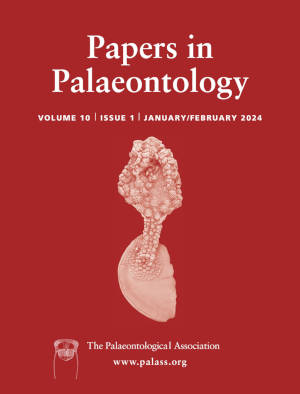Article: A new early water frog (Telmatobius) from the Miocene of the Bolivian Altiplano
Publication: Papers in Palaeontology
Volume:
10
Part:
1
Publication Date:
2024
Article number:
e1543
Author(s):
Raúl O. Gómez, Tomás Ventura, Guillermo F. Turazzini, Laurent Marivaux, Rubén Andrade Flores, Alberto Boscaini, Marcos Fernández-Monescillo, Bernardino Mamani Quispe, Mercedes B. Prámparo, Séverine Fauquette, Céline Martin, Philippe Münch, François Pujos, and Pierre-Olivier Antoine
DOI:
10.1002/spp2.1543
Abstract
Abstract We describe the new frog Telmatobius achachila sp. nov. from the late Middle to earliest Late Miocene of Achiri, based on a partial skeleton found at 3960 m above sealevel in the Bolivian Altiplano. This skeleton, attributed to a male adult, constitutes the first documented fossil record of the speciose living genus Telmatobius, endemic to the Andean Cordillera and the Altiplano. Phylogenetic analysis confirms the new species as being part of the crown group, and diverging both later than the T. verrucosus group and earlier than the T. bolivianus, T. marmoratus and T. macrostomus groups. Coupled with its accurate stratigraphic provenance and age, this phylogenetic position provides a relevant calibration point for timing the evolutionary history of these highland, mostly aquatic frogs. The skeleton of T. achachila indicates that several of the osteological peculiarities of extant Telmatobius were already acquired at c. 12 Ma, including some that might be linked to their aquatic lifestyle. Together with mixed montane–rainforest pollen vegetation uncovered in the same level, this fossil specimen further provides key data enabling a more accurate reconstruction of ancestral habitats and elevation ranges of Telmatobius, agreeing with the previously postulated conditions in which these water frogs might have first evolved. Ultimately, this discovery adds to the sparse evidence of a humid tropical Bolivian Altiplano just prior to: (1) the Late Miocene uplift pulse of the Central Altiplano; and (2) the drastic climate deterioration that occurred from Late Miocene time onward, leading to the harsh highland-steppe environments reigning there today.
